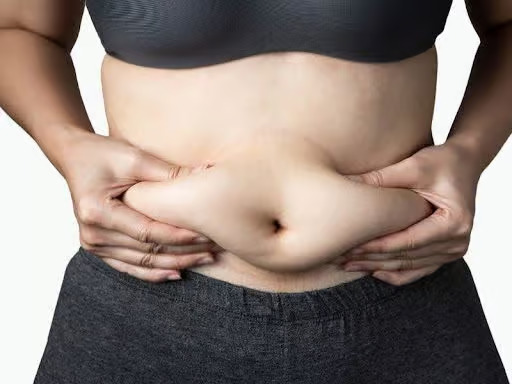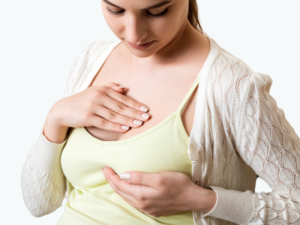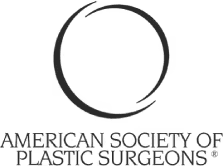Liposuction
What is Liposuction : Procedure Fundamentals, Types, and Recovery Milestones

Liposuction is a highly popular cosmetic surgery procedure for individuals seeking to sculpt and contour their bodies by removing excess fat deposits. This surgical intervention is designed to enhance body proportions and restore confidence.
In this blog, we’ll understand the specifics of what liposuction entails, the different types of liposuction procedures, the recovery timeline, and the dos and don’ts for fast recovery post-surgery.
What is Liposuction?
Liposuction, synonymously called lipoplasty or body contouring surgery, is a cosmetic procedure that aims to remove stubborn fat pockets from various areas of the body. The aim is to create a more aesthetically pleasing and proportionate silhouette. It is essential to note that liposuction is not a weight-loss procedure but rather a method for refining body contours.
Liposuction Procedure
Liposuction procedure involves the insertion of a thin tube (cannula) through small incisions in the targeted areas. The surgeon then uses this tube to suction out excess fat, sculpting the body to achieve the desired shape. The procedure is commonly performed on areas such as the abdomen, thighs, buttocks, arms, and neck.
Incisions:
Small, discreet incisions (0.2 to 0.5 inches) are strategically made near target areas, allowing optimal access for the cannula while minimizing scarring.
Tumescent Solution:
A tumescent solution, combining saline, local anaesthetic, and a vasoconstrictor, is injected into treatment areas. This solution numbs the area, reduces bleeding, and aids in fat cell removal.
Fat Extraction:
A cannula is inserted through incisions to break up and extract excess fat cells. The surgeon sculpts the treated areas, paying attention to natural anatomy and desired contours.
Closing Incisions:
After fat removal, incisions are closed using sutures or surgical tape. Their small size and strategic placement minimize scarring.
Recovery and Post-Operative Care:
Following surgery, patients are monitored before discharge. Detailed post-operative care instructions, including compression garment use, pain management, and monitoring for complications, are provided.
Understanding these streamlined steps is essential for those considering liposuction. Choosing a qualified, experienced surgeon ensures a tailored approach, enhancing safety and achieving desired aesthetic outcomes.
Recovery Timeline After Liposuction
Patients often wonder, ‘What is the recovery time for liposuction?’ as they eagerly anticipate the transformative results and the timeline for returning to their regular activities after the procedure.
Understanding the recovery timeline is crucial for patients undergoing liposuction. While individual experiences may vary, a general week-to-week recovery outline provides insight into what to expect post-surgery.
Week 1:
Immediately after the surgery, patients need to prioritise rest and avoid strenuous activities. Pain, bruising, swelling, and soreness in the treated area are common.
Compression garments are essential to reduce swelling and aid in the healing process. Light activities, like walking, can typically be resumed within a few days.
You might need a manual lymphatic massage from the second day onwards. Lymphatic massage is extremely helpful in improving the patient experience by removing excess fluid and helping in speedy recovery.
Week 2:
Swelling and bruising should begin to subside, although some discomfort may persist. Depending on the physical demands of individual jobs, patients may consider returning to work but should avoid strenuous activities.
While some improvement in body shape may be noticeable, the final results will take longer to become apparent. The duration of wearing compression garments can be reduced, but caution is advised.
Week 3-4:
Most swelling and bruising should significantly decrease during this period. Patients can gradually resume more strenuous activities and exercise, avoiding anything causing pain or discomfort.
The body continues to heal, with contours improving gradually. More noticeable changes in body shape become evident.
Patients can stop wearing compression garments and wear all types of clothing according to their preferences.
Week 6-8:
By the sixth week, many patients have fully recovered and are returning to normal activities. While the results of liposuction become more apparent, the final outcome may take several months to a year to fully manifest.
It’s crucial to recognize that recovery timelines are individual, and following the surgeon’s post-operative instructions is paramount. Patience is key as the body heals and adjusts, ultimately revealing the desired contours.
Note: Manual lymphatic massage from the second day may be helpful to you. This improves the patient’s experience by removing excess fluid and helps with the speed of recovery.
Do and Dont’s for Faster Recovery
Achieving a fast and smooth recovery after liposuction requires careful adherence to post-operative instructions provided by your surgeon. Here’s a comprehensive guide on what to do and what to avoid during the recovery period:
What to Do for Fast Recovery:
- Follow post-op instructions: adhere to medication schedules, activity recommendations, and incision care.
- Wear compression garments: wear them as directed for reduced swelling and improved blood circulation.
- Have manual lymphatic massage: You need to have a manual lymphatic massage from the second day. This helps to improve the patient experience by removing excess fluid and helps with the speed of recovery.
- Stay hydrated: drink ample water to support healing and eliminate toxins.
- Eat a healthy diet: consume nutrient-rich foods for tissue repair and overall well-being.
- Engage in light activity: introduce gentle movements like walking to enhance blood circulation, avoiding strenuous exercises initially.
- Attend follow-up appointments: be present at scheduled check-ups for progress monitoring and potential adjustments to your recovery plan.
What Not to Do for Fast Recovery:
- Avoid strenuous activities: no heavy exercises or lifting.
- Quit smoking: enhances blood flow for faster healing.
- Limit alcohol: may interfere with healing and medications.
- Take prescribed meds on schedule.
- Avoid tight clothing: prevents blood flow constriction.
- Skip hot tubs/pools until cleared by the surgeon.
- Protect from sun exposure: prevents swelling.
- Consult surgeon for unexpected symptoms.
Professionalism. Excellence. Experience – Dr Faisal Salim
Liposuction is a transformative cosmetic surgery procedure that can significantly enhance body contours and boost self-confidence. Understanding the procedure, the various types of liposuction, and the recovery timeline allows patients to approach the process with informed expectations.
Dr Faisal Salim is one of the top-notch plastic surgeons known for bespoke treatments and professionalism. Book a consultation with Dr Faisal to achieve the sculpted and refined look they desire through liposuction.








